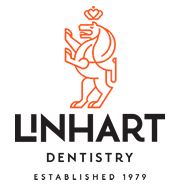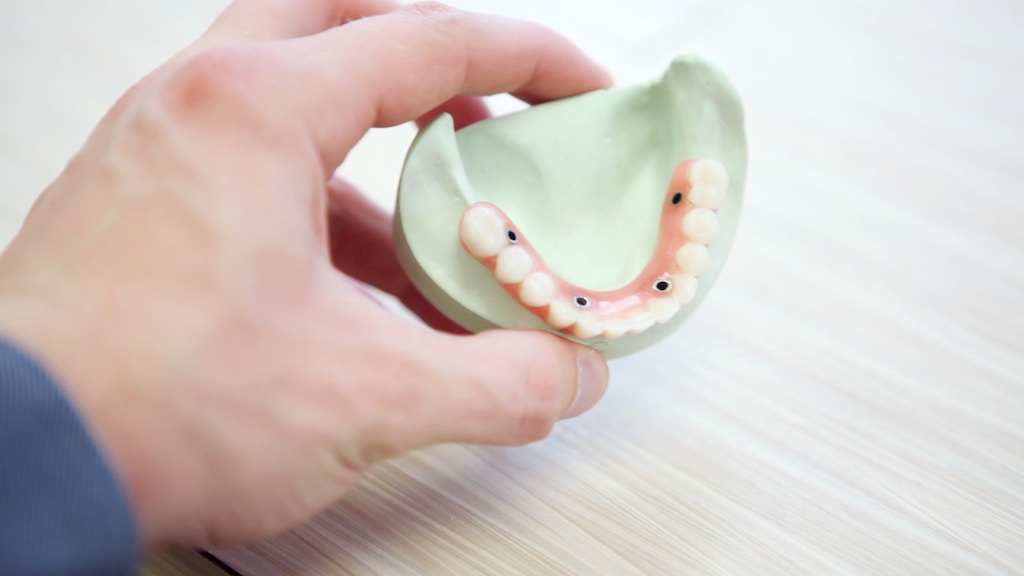
It’s completely normal to feel apprehensive after getting the news from your dentist that you’ll need your wisdom teeth removed – especially given this news is often received during your teenage years or early twenties.
But facts will always remain facts so let’s look at some of them.
1. Do You Really Need To Get Your Wisdom Teeth Removed?
Unlike carnivores, human beings have smaller jaw spaces and once the wisdom teeth get in there, it starts affecting chewing and speaking.
This is because most times, they don’t fully erupt and become impacted. If you want to identify them, check if you have any third molars, yep, that’s it.
The wisdom teeth begin to affect the second molars after some time, so removing them before that happens is usually a recommended option.
And if you want to know why our jaws can’t accommodate the teeth, it’s all down to the vitamin K2. This vitamin facilitates the transfer of calcium from the body into the bones.
Calcium is needed for proper development of the teeth and if you’re not getting enough of it, apart from putting you at the risk of being affected with certain dental conditions, you can also develop osteoporosis, which is a condition where your bones can be very easily fractured.
2. What If I Don’t Want Them Removed?
Apart from damaging other teeth, you also stand the chance of getting your other teeth decayed. Here’s how this works, remember I said wisdom teeth can affect your normal bite? When this occurs, the teeth combine with your second molar to create a pit in your mouth where food is trapped.
Tiny particles of this food become difficult to get rid of and harmful bacteria feast on it and you get plaque that if still not removed, degenerates into tartar and starts attacking your enamel creating holes in them.
All of these don’t affect you if you were born without wisdom teeth. If that’s you, just know you’re fine but there are more people with wisdom teeth than those without and that’s why you should check. This can lead to gum disease and other dental diseases of the mouth.
3. When Should I Get My Wisdom Teeth Removed?
Extraction is always easier if it’s done before the roots are fully formed. Doing it at that time also reduces the duration of recovery from surgery and the associated pain.
The roots firmly implant the teeth into their sockets so that’s why it’s always better to get the process done early.
4. What is the Typical Recover Time from Removal of Wisdom Teeth?
One week is a good rule of thumb to have in mind. Your nutrition during this time also contributes to its length, try to stay away from foods that make your teeth sensitive. Your dentist will likely advise that very cold or hot food are a bad idea as they can cause pain at the extraction site.
5. Any Questions I Can Ask The Dentist?
Sure. So you’re comfortable with the entire process, you should ask questions like:
- how many of your wisdom teeth need to be removed?
- what type of anesthesia will be recommended for you, local and sedation anesthesia are common types?
- what should you do if you develop dry sockets?
- how often you need to change the gauze pads?
- what you should be thinking about for a post operative diet?
Armed with this information you should be well on your way to a smooth wisdom tooth removal procedure.
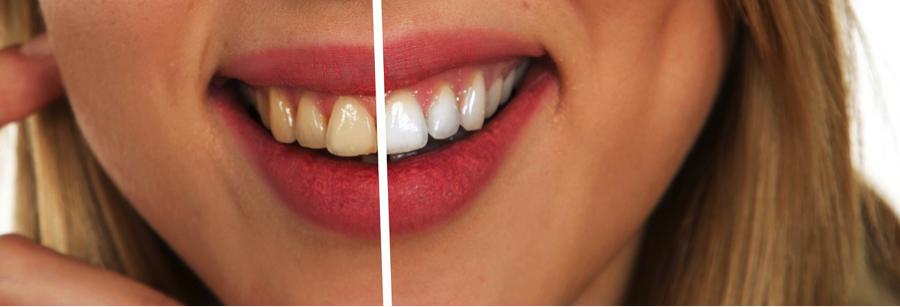
There are very few things as terrible as not being able to show off your smile because your teeth have been discolored.
Well, it’s said that if you know the causes of a problem you’re just on your way to solving it. Wanna know what’s causing your yellow teeth? And how to deal with the problem?
Here are six areas to pay attention to when evaluating what’s causing your yellowing teeth.
1. Your Genes
Every feature you can see on your physical body was inherited from your parents. Your blue or brown eyes, your round or curved nose and even your teeth.
You can inherit teeth colors like reddish gray and reddish brown from your parents.
When genes are involved, sometimes it is best to speak with a dentist to evaluate a proper teeth whitening solution can be recommended for you.
2. Exposure Of Your Dentin
The enamel is normally a thick layer that covers the underlying gray dentin part of the teeth.
This exposure is caused by enamel erosion that results from the acidic attack of your enamel by acidic foods and drinks.
Poor oral hygiene also causes this enamel erosion.
Limiting your intake of acidic foods and committing to a proper brushing and flossing routine helps remineralize the enamel, improving its thickness in the process.
3. Smoking And Excessive Coffee Intake
Your enamel has this ability to absorb pigments from the foods and drinks you take, and these pigments decolorize the enamel when they seep in.
Two major culprits are nicotine from smoking and caffeine from coffee. These pigments get into the enamel giving it a brownish coloration.
So now you know why most smokers have brown teeth.
4. Antibiotics
Your baby’s teeth are all formed in the womb. And there are reports that prove that tetracycline antibiotics stain teeth even while they’re developing in the gums.
If your mother took these antibiotics during the second trimester of her pregnancy or you took them before turning eight, then you may need some kind of bleaching treatment where chemicals like hydrogen peroxide are used to whiten your teeth beyond their natural color.
5. Fluorosis
Dental fluorosis is a common disorder that occurs when large amounts of fluoride are ingested during enamel formation. Fluorosis appears as little whitish, yellowish or brownish spots on the teeth.
Train your kids not to swallow toothpaste or mouth rinses after using them to clean their teeth. And if they’re on any fluoride supplement, ask your dentist so an overdose of the supplement isn’t ingested.
6. Accidents
A large amount of pressure directed on the teeth as in accidents can cause a crack in the enamel, exposing the interior dentin and sometimes serving as a sign of an internal bleeding that’s not been discovered.
If you’re pregnant, make sure you’re not brushing your mouth after vomiting while experiencing morning sickness. This is because the acid from the stomach makes up a large part of the vomit that bathes the enamel.
This acidic solution demineralizes and weakens the structure of the enamel, so brushing after vomiting makes it easier for the already weakened enamel to experience erosion.
Wrap Up
So there you have it – six reasons why your teeth may become discolored over time along with the best practices on how to prevent each scenario.

There is plenty of dental advice on the Internet. But most of it is nothing specific. It’s just the usual make sure you brush your teeth and I hope you use a dental floss.
But very few people ever remember to say when to brush your teeth and how to floss your teeth.
And these things do matter, especially if you’re on treatment for a particular condition.
So here are some common questions about brushing and flossing and answers you can use:
1. Why Even Brush My Teeth?
You may have been doing it every day for years now but have you ever wondered why everyone gets involved in this daily routine? Well, you may have done that, and I’m guessing you thought it was to get rid of the stale morning breath.
And you were right, but that’s just one of the reasons. There’s a lot going on in your mouth as the day progresses, and it gets covered with a substance called plaque.
It’s even worse if you’re on a diet high in sugars ’cause that just means it’ll form quickly on your teeth. Brushing removes most of this plaque but, when avoided, can increase tooth can decay resulting in gum disease.
All of these infections come with their own problems, sometimes bleeding is involved. This affects your smile and some oral infections have been associated with heart disease and diabetes.
2. Can Going Vegan Eliminate Brushing?
One major reason we need to brush at least twice a day is to deal with plaque buildup. Most dentists advise we stay away from sugary foods, especially snacks and sweets.
Yes, switching diets to a more vitamin-rich one can help nourish your teeth but the problem with this is that there are vegetables that are high in sugar and most carbohydrates are broken down to simple sugars so there’s really no practical way you can avoid sugar in your diet.
You’ll still find deposits of plaque on your teeth at the end of the day so it’s best to just choose a healthy diet and stick to the 2-2 brush rule. That is, brush your teeth twice a day and for two minutes each time.
3. Can I Brush More Than Two Times In A Day?
Yes you can, but you may want to reconsider that.
Overbrushing causes gum recession and you can also injure your gums in the process so it’s never a good idea.
Stick to brushing in the morning and evening and you’ll be fine.
4. Can My Child See The Dentist (And If Yes, When)?
Yes, your child can see the dentist. You can start when the first tooth comes in. Our complete permanent teeth set are available at birth, it just takes some time before we are able to see and touch them.
Your child can also undergo dental x-rays when they’re at least two years of age.
5. What Toothbrush Do I Use?
The toothbrush industry is a large one, there are manual, battery-powered toothbrushes and electric toothbrushes, there are also brushes with rubber handles and those with plastic handles.
And pressure sensors are also included in some brands, this is something you need if you’re not able to time yourself to avoid over-brushing.
Manual toothbrushes have almost no recurring costs. But their bristles get worn out faster than the rest and they can get broken.
Instead, consider the Nano-Silver Toothbrush which combines a unique combination of antibacterial, ultra-soft, multi-length bristles.
When you’re shopping for a toothbrush, and you should normally do this once in three months in line with ADA’s standard, you should also get a case where you can store your toothbrush after each use.
Leaving your toothbrush exposed in the bathroom or in your room may be the perfect invitation for bacteria to rest on their wet bristles.
6. What’s A Good Brushing Technique Like?
Let your toothbrush be at a 45° angle to your teeth and move your toothbrush in a circular motion around your teeth.
And back to the bristles, any toothbrush you get should have be soft bristled so you don’t hurt your gums or injure your tongue in the process.
Brush all the surfaces of your teeth and don’t forget your tongue while you’re at it.
Your brush head is another thing to look at for this technique to work. We all have different jaw sizes so you should use something that can fit conveniently into your jaw space and move around without any problems.
7. Why Even Floss?
Many dentists agree that brushing can’t get all the plaque off your teeth. There are still very little margins, pits and crevices that even the most sophisticated toothbrushes can’t get to.
So getting and using a dental floss is the only way to stay 99.9% plaque free. Flossing also prevents common dental infections like cavities and periodontitis.
8. How Many Times Should I Floss?
As many times as you brush your teeth. So I guess that’s twice. Flossing doesn’t take as much mental energy as brushing so there’s no reason to skip it, you can floss even while listening to music or watching television.
9. What’s The Best Toothpaste?
There’s really nothing like a toothpaste that works for everyone at all times because some conditions can make you react to the contents of a particular paste.
But a fluoridated toothpaste is a good start. Fluoride is a very important element that helps strengthen the teeth. It also fights enamel erosion that occurs when your teeth are being attacked by demineralizing acids.
And if you’re looking to get a toothpaste to whiten your teeth, there are many options for you but it’s important you consult your dentist before using any or opting for traditional remedies.
There are many questions people have about brushing and flossing, this post should have answered some of yours.

Paleo diets are a big deal these days. Books on the diet seem to be everywhere, and searching “Paleo diet” in Google pulls up over 17 million results. And no wonder it’s so popular. The Paleo diet has been touted to help cut down on preservatives, help people lose weight and contains anti-inflammatory benefits from increased plant nutrients. It’s even supposed to help the teeth and gums. So below is your guide to Paleo diet dental health.
What is The Paleo Diet’s Link to Teeth?
To start, the Paleo diet aims to match what we believe mankind used to eat before agriculture was invented. There’s plenty of academic debate about what cavemen used to actually eat, but the paleolithic diet seeks to limit agricultural food nonetheless. Anything that seems like it would have been in a hunter-gatherer diet or plant-based diet is included.
That means people on a Paleo diet eat:
• Lean meats
• Seafood
• Fresh fruit
• Non-starchy veggies like lettuce, green beans, broccoli, cauliflower and spinach
• Nuts
• Seeds
• Eggs
• Plant-based oils like olive oil
People on a Paleo diet can’t eat:
• Grains
• Starchy veggies like potatoes
• Legumes or beans
• Dairy
• High-fat meats like ribs or pepperoni
• Sugar
• Processed foods
• Salty foods
By now you may be wondering what this has to do with teeth, exactly. Our modern diets are what create many of the problems for our teeth and gums including gum disease. The bacteria in our mouth feed off of starchy food and sugar in particular, which creates acids. This acid, in turn, erodes the enamel of our teeth, which can lead to cavities. And the Paleo diet cuts out starchy food and processed sugar.
In fact, a study in the Journal of Periodontology looked at 10 people who lived in an environment replicating the Stone Age for four weeks.
As you can imagine, plaque and overall bacteria counts increased, so dentist appointments and cleaning are still important. But gum bleeding on probing decreased and gum pockets decreased. What this suggests is that the Paleo diet has some positive impacts on dental health.
What’s more, examination of old European hunter-gatherer dental samples shows fewer signs of cavities and periodontal disease than we have now. It wasn’t until widespread agriculture that the bacteria in the mouth shifted to the kind that is associated with disease. And the bacteria that cause tooth decay become dominant around the Industrial Revolution.
Granted it’s not all rosy. NPR reported that a cave in Morocco contained hunter-gather skeletons with teeth that were in horrible condition.
Just about everyone had cavities.
Turns out these people had a diet high in acorns, which are high in carbohydrates and stick to the teeth. So not all hunter-gathers were paragons of dental health. But it does make a case for achieving strong dental health through the Paleo diet, as the Moroccan cave dwellers’ downfall was through carb-based foods.
Paleo diet dental health with Dr. Weston A. Price
You won’t find Dr. Weston A. Price with his own health talk show or posting broad smiles on Instagram. Because he was a dentist from the 1930s in Cleveland. Yet his findings live on in the Weston A. Price Foundation.
He traveled all over the world looking for areas that have remained isolated from Western influence: indigenous North and South Americans, Gaelic communities in the Outer Hebrides, African tribes and Australian Aborigines, to name a few. And these communities had healthy, beautiful teeth.
According to The Weston A. Price Foundation
When Dr. Price analyzed the foods used by isolated peoples he found that, in comparison to the American diet of his day, they provided at least four times the water-soluble vitamins, calcium and other minerals, and at least TEN times the fat-soluble vitamins, from animal foods such as butter, fish eggs, shellfish, organ meats, eggs and animal fats—the very cholesterol-rich foods now shunned by the American public as unhealthful. These healthy traditional peoples knew instinctively what scientists of Dr. Price’s day had recently discovered—that these fat-soluble vitamins, vitamins A and D, were vital to health because they acted as catalysts to mineral absorption and protein utilization.
Because of the nutrients involved with Paleo diet dental health, maybe it’s time to consider getting back to a purer diet.
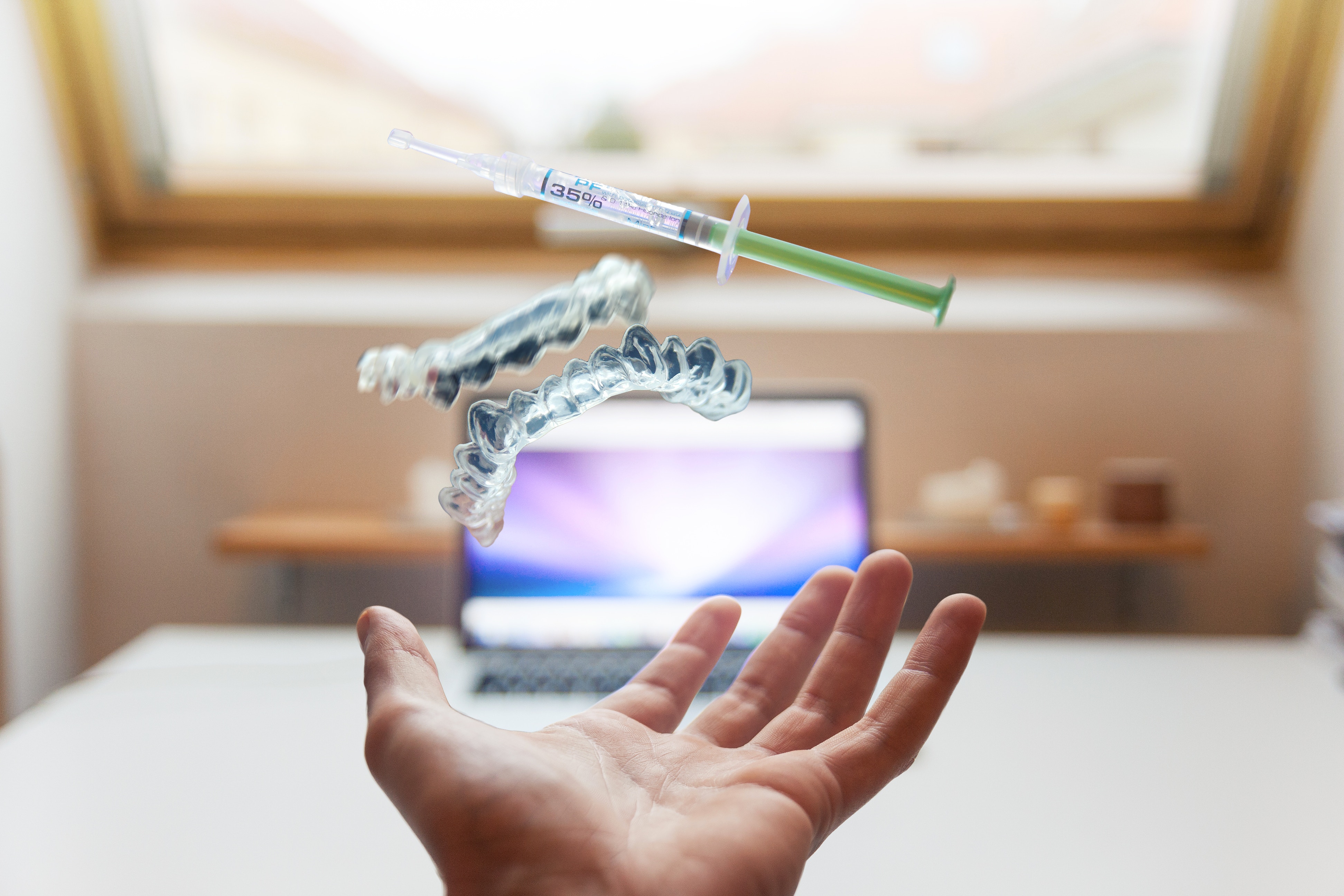
Poor dental care affects your overall health and well-being, so oral hygiene isn’t something you can ignore. If you’ve been doing things that are harmful to your teeth, you’ll likely end up with one (or more) dental infections.
But like every other periodontal disease, if it’s detected on time, you can see a dentist for proper treatment.
So you want to know more about these diseases? The signs to look for? How you can prevent them? Let’s jump in.
1. Oral Herpes
Oral herpes is caused by the herpes simplex virus, you may be familiar with the common names like cold sores or fever blisters. That’s because you’d likely see sores on your lips or gums if you’re infected.
Once the virus gets into your body, it’s there for life but that’s nothing to worry about ‘cause it’d be inactive.
You can get infected by sharing toothbrushes and dental floss with carriers and even kissing or any other form of skin contact.
You’d find it difficult eating if you’re infected but healing is usually complete in 14 days.
2. Gingivitis
Gingivitis is an inflammation of the gums and is another periodontal disease with bacterial roots. It usually affects people who’ve failed to adopt the right brushing and flossing routines. And it’s not too difficult to know why.
After every meal, plaque will begin to form on to your teeth. But that’s not the problem. It only gets dangerous when nothing is done to remove the plaque. And remember plaque is a mass of bacteria, so when it gets below the gum line, gingivitis sets in.
Some signs to look out for are swollen and bleeding gums and pain when chewing.
And the best treatment for it? The best way to prevent gingivitis? Obey the ADA’s 222 rule, brush and floss twice daily!
3. Periodontitis
Don’t treat gingivitis and you get periodontitis, it’s that simple. That’s because the infection spreads from the gums to the ligaments and bones that support the teeth making the teeth fall out. The periodontitis disease also increases the rate of bone destruction around the teeth.
The symptoms are very similar to gingivitis except for the loose teeth also experienced. Your dentist may require you undergo an x-ray to show the lost bones.
If the problem gets too bad, a tooth or more may have to be removed so the infection doesn’t spread to others.
And sticking to a good brushing and flossing routine helps with treatment also.
4. Herpangina
Another dental infection you should look out for is Herpangina, it’s a viral infection expressed by small, blister-like ulcers on the roof of the mouth and in the back of the throat.
It normally affects children so you can see why you can’t ignore your little one’s oral care.
Sore throat, loss of appetite and vomiting are some of the symptoms and the ulcers at the back of the mouth have a gray color.
You should seek dental care if a sore throat lasts for more than five days and common symptoms of dehydration like dry mouth and reduced urine output are expressed.
Herpangina is caused by the coxsackieviruses which are contagious so you should wash your hands if you come in contact with a carrier and encourage them to cover their mouths while coughing or sneezing.
5. Hand Foot and Mouth Disease
Let’s call it HFMD. It’s a viral infection that’s similar to herpangina and is of huge importance to all dental practitioners.
It’s also caused by a coxsackievirus and very contagious. The symptoms are similar to that of herpangina with red spots appearing on your child’s palms and the soles of their feet.
But it’s not something to worry about. Your child would normally recover anywhere between seven to ten days without medical treatment.
Practicing proper hygiene and avoiding close contact with carriers are some preventive measures to adopt.
6. Dental Caries
You can call it cavities or tooth decay, it’s the same thing. Dental caries is caused by bacteria that destroys the enamel and the dentin under it. These acids also attack the cementum layer of the tooth.
This happens when bacteria in plaque convert the sugars in your food to enamel-attacking acids. If this continues unchecked, holes would be seen on the tooth and they’d get larger over time.
Common symptoms are increased tooth sensitivity to hot or cold foods and drinks as the decay progresses.
Regular brushing (with a fluoridated toothpaste) and flossing help to remineralize the enamel, fighting the acid breakdown in the process.
And for treatment, you definitely need to see a dentist, especially for the late stages.
7. Pulpitis
When tooth decay gets to the pulp of the tooth, the bacteria causes an inflammation of the dental pulp and that’s pulpitis. As the pulp swells, it’s trapped by the dentin and this pressure causes a toothache. That’s why a common name for pulpitis is toothache.
The pulp cavity is a very sensitive area of the tooth, so if the dental infection to that area isn’t treated quickly, it dies. In such cases, usually called irreversible pulpitis, the dentist may need to drill into the pulp and remove the infected matter from the tooth.
In reversible pulpitis, a filling procedure can save the tooth.
Cutting down on sugary foods is one way to prevent pulpitis.
8. Canker Sores
Canker sores are painful ulcers or sores on the mouth, tongue, lips or throat. They could be caused by injury to the mouth, rough brushing techniques, dental braces, vitamin deficiencies or even spicy foods.
Some symptoms are bleeding gums and painful gums. It’s a viral infection that exhibits some symptoms of oral cancer so you should run a check to be sure.
Canker sores aren’t contagious so don’t confuse them with the contagious oral herpes.
They normally don’t require any treatment to heal but you should avoid spicy foods and vigorous brushing to ease the pain.
9. Oral Thrush
Oral thrush is a fungal dental infection that can affect the mouth, tongue and the gum. It’s usually seen in babies and causes bumps or rashes to form on the tongue.
Apart from the rashes, other symptoms are dry skin at the inner cheek and difficulty swallowing.
Infected babies can pass the fungus to their mothers during breastfeeding, so if you’re a nursing mother, it’s something to watch.
You should practice good oral hygiene to prevent oral thrush.
Anyone can get a dental infection. But when you know how to prevent and treat most of the common names, you’d understand what the dentist is doing and make the necessary lifestyle changes.
When you have a bad habit, it’s always difficult to drop it. To take good care of your teeth, you should be developing the right dental habits like brushing and flossing.
But what if you have a lot of the bad? Well, then you have to stop. I mean, you really don’t have a choice, do you? Just so you know what these bad habits are, here are some of them.
1. Excessive Intake Of Acidic Foods And Drinks
You may not them, but your citric fruits and juices, drinks with lots of grape and lime and fizzy drinks contain tons of organic acids that are not good for your teeth.
The acids in these beverages cause what’s known as acid erosion, where the outer enamel layer of your teeth gradually thins because of increased exposure to acid attack.
Your mouth has its own natural way of fighting enamel attack by bathing the enamel in rich nutrients present in saliva. But when the rate of breakdown exceeds that of the formation, the effect of enamel acid erosion would be very clear.
When your enamel erodes, the dentin that houses most of the nerves and blood vessels of the region is exposed, leading to tooth sensitivity and causing pain. The teeth also become discolored.
So look at those acidic drinks and go learn about more so you’d watch your consumption of these products.
2. Grinding And Clenching Teeth
If you have a lot to do during the day without enough time for yourself making you feeling stressed, it’s possible that’s what’s causing your grinding.
Teeth grinding can also be caused by anxiety, missing teeth and disorders like sleep apnea.
The amazing thing about grinding is that, it’s one habit you may not even think you’re guilty of.
Most people who grind their teeth get to know from their roommates, that’s because it’s a habit that’s developed unconsciously so you really can’t recognize it while you’re doing it.
But there are other ways to know if you grind your teeth at night. If you’re always waking up with jaw and muscular pains and headaches then you’d want to see the dentist to run a few checks.
Grinding can loosen your jaw bones causing gum recession and difficulty in opening the mouth.
You may need a mouthguard that’s made to fit your mouth and possibly stress counseling to get advice on how you can deal with stress.
If you have any fractured or cracked tooth from grinding, your dentist may speak with you about bridges, crowns and implants.
3. Overbrushing
Overbrushing is another bad habit but there are many things that constitute overbrushing.
Are you using a toothbrush with hard bristles? An abrasive toothpaste? Are you brushing more times than necessary? Like five or six times a day? Are you brushing for more minutes than necessary? And I mean anything more than 2 minutes. Then you’re overbrushing!
Overbrushing causes cavities in the neck of the tooth called abrasion cavities. Treatment of these cavities usually involves a dental filling procedure.
And it also causes gum recession. That’s just for starters though, as things can get so bad you’d get bleeding gums or other dangerous dental infections.
Your dentist may recommend a surgery to correct the recession problem.
So get a toothbrush with soft bristles, and an ADA recommended toothpaste. You’d normally see the ADA seal on such pastes.
You can also get an electric toothbrush with a pressure sensor and a timer to warn you when you’re applying too much pressure or brushing for more than the recommended time.
4. Using Non-fluoridated Toothpaste
There’s this new craze in the dental industry over non-fluoridated toothpaste caused largely by negative advertising directed at the effects of large amounts of fluoride on the body.
These advertisers are actually right, but they’re telling just a little part of the story.
Large doses of fluoride are very toxic causing problems like fluorosis where there are yellowish patches on the teeth.
But the concentration of fluoride in the toothpastes that include them are in minimal amounts that are very fit for the teeth.
Fluoride helps remineralize the enamel, improving its structure and making it more resistant to bacterial acid attack.
Tooth decay patients are even advised to introduce fluoride to their water to help boost recovery.
So go get that fluoridated toothpaste.
5. Smoking
There are just too many pamphlets and commercials on the dangers of smoking. I mean even the cigarette pack itself has a little note reading that smokers are liable to die young.
But let’s concentrate on oral health. Does smoking affect it? Of course, it does. When smoking, it passes the teeth and gums before getting into the body so that’s something to look at.
The chemicals used in the production of cigarette increase the production of bacterial plaque in your mouth which would attack your teeth and gums.
Smoking affects the proper functioning of the lungs so smokers have low levels of oxygen in their blood which means the metabolic rate would be reduced so gum injuries won’t heal as fast as they should.
That’s dangerous for someone with bleeding gums. The increased plaque on your teeth just means you’d be at more risk to get cavities than someone who doesn’t smoke.
Smokers have bad breath too. The chemicals released in smoke end up being deposited in your mouth causing bad breath.
Smoking also discolors your teeth because the enamel absorbs some of the nicotine content in smoke giving it a yellowish brown color.
And if you’ve not heard, smokers are at greater risk of suffering oral cancer than those who don’t.
So search for a plan on quitting smoking and stick to it.
6. Staying Dehydrated
Are you losing lots of water and refusing to replace it? Then that’s bad for your oral health. Dehydration causes what’s known as dry mouth.
It can be caused by drugs known as diuretics that increase the rate of urine excretion, reducing water content in the body.
It affects saliva production, and remember that saliva is the body’s natural mouthwash, it bathes the teeth in a watery nutrient-filled fluid, mineralizing the enamel and removing plaque-forming food particles.
Just drinking at least eight glasses of water daily is enough to fight your dehydration problems. If that doesn’t work, check with the dentist to ensure you’re not on any medication that’s making you dehydrated and you aren’t suffering from any condition that’s affecting you.
7. Ignoring The Symptoms
And it’s not just about oral health, you shouldn’t ignore the symptoms that have to do with your overall health too.
If there’s anything strange you’ve noticed about your teeth, it’s your body’s way of telling you that you need to get to the root causes.
But what if you don’t know the symptoms to look for?
Look at some of them:
-Bleeding Gums
Bleeding gums are a strong indicator of gingivitis, and that’s just where it all starts.
That’s because untreated gingivitis causes periodontitis which loosens the jaw bones, making some of the teeth to fall out.
Gingivitis is a clear sign that you haven’t been taking care of dental plaque on your teeth, so they’ve grown to the level where they get to inflame the gums.
Bleeding gums is also an indicator of malnutrition as the vitamins that help in the activation of clotting factors are deficient and it has also been linked to oral cancer.
-Crooked Teeth
…Or chipped and misaligned teeth. Misaligned teeth cause food particles to get stuck in little spaces between the teeth and these particles serve as food to oral bacteria.
So brushing and flossing can’t fight plaque formation and you become vulnerable to tooth decay.
Getting in contact with a dentist for a straightening procedure to be carried out would go a long way.
Other symptoms you shouldn’t also ignore are bad breath and tooth sensitivity.
Bottom line: If something’s not right with your teeth, it doesn’t pay to be silent about it.
8. Brushing Without Flossing
Brushing helps fight dental plaque and bad breath. It’s a ritual you can’t avoid if you’re interested in maintaining proper oral health. That’s all correct.
But brushing is just a part of the formula. You’d get to 85% of your inner and outer teeth with brushing, but what of the remaining 15%?
You think it doesn’t matter? The little spaces between your teeth that the toothbrush can’t get into can serve as breeding ground for dental plaque.
That’s why you need to combine brushing with flossing. Flossing gets into those gaps your toothbrush can’t.
9. Poor Diet
Dental plaque demineralizes the tooth enamel, remember? But your teeth has a way of fighting back. It’s called remineralization.
Teeth remineralize with a good diet by increasing the concentration of the very essential nutrients in saliva. Nutrients like Calcium and Vitamin D.
But if you’re on a poor diet, your body isn’t going to get enough of these nutrients so they’d be nothing to feed your saliva with.
You can get these nutrients by consuming large amounts of milk and other dairy products.
Oral health has a lot to do with the choices you make, so stop making these wrong decisions.
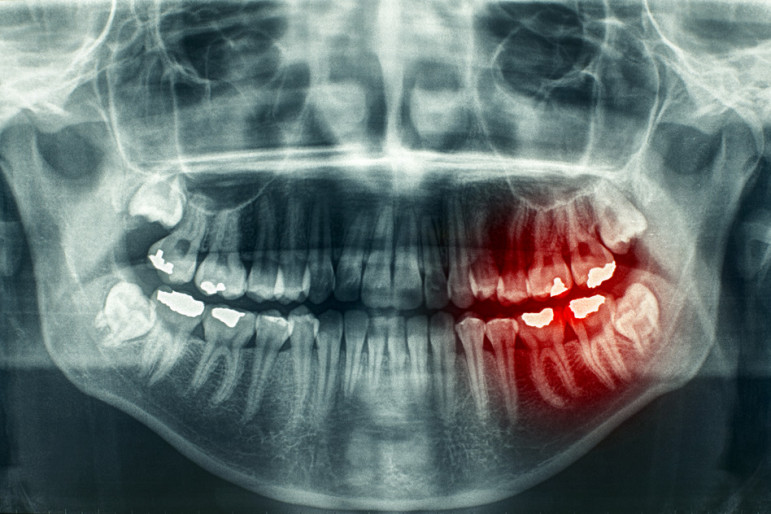
Do you think that missing the occasional dental checkup is no big deal? It may surprise you to know that every time your dentist takes a look at your mouth, he or she gets a glimpse of your level of overall health in addition to your oral health. In fact, dentists are often the first health professionals to spot certain medical conditions in their earliest stages. The following are just a few conditions that your dentist can discover during a routine checkup.
Diabetes, Heart Disease and Dementia
When previously healthy gum tissues suddenly begin to swell and bleed, your dentist sees this as a red flag for adult-onset diabetes. The high blood sugar levels, inflammation and impaired healing processes that are characteristic of diabetes make a patient more susceptible to infected gums. Patients with gum disease are also more likely to have heart disease and develop dementia, so the onset of this condition may prompt a visit to your physician.
Oral Cancer
You may not even realize everything your dentist is doing during a checkup, but one component of the examination is an oral cancer screening. Composed of a manual palpation of the soft tissues of the mouth, face and neck and a visual inspection of the oral cavity, an oral cancer screening can catch this disease in its infancy, which is a key factor in achieving a positive outcome.
Anemia
Marked by a low red blood cell count or low hemoglobin, anemia shows up in the oral cavity in several ways. As with many health conditions, anemia often raises a person’s risk for developing gum disease. When hemoglobin, which is the substance that gives red blood cells their dark color, is low, the soft tissues of the mouth may take on a pale color. Lastly, patients with anemia sometimes present with an inflamed tongue.
Stress
Several oral health conditions can let your dentist know you are under stress. Bruxism, which is an unconscious grinding of the teeth and clenching of the jaw, is often caused by stress. TMJ disorder, which affects the jaw joints and often causes head and jaw pain, is also a common product of stress. Canker sores or ulcers in the mouth are another clue that the patient needs to look at ways to reduce stress.
Eating Disorders
The eating disorders anorexia and bulimia are easy to spot upon examining the teeth. Both disorders prevent the body from receiving essential nutrients to keep the teeth strong and healthy, and they will present themselves with rampant dental erosion and tooth decay. Because bulimics induce vomiting on a regular basis, their teeth, especially the back surfaces, are more vulnerable to erosion from frequent contact with stomach acids.
The Importance of Regular Dental Checkups
Your oral health and general health are not mutually exclusive, so you must attend to both regularly by keeping your dental and medical checkup appointments. Not only will seeing a cosmetic dentist near you every six months ensure that your teeth and gums are in great shape, but it can also help detect some health problems early in their development and prompt you to seek the appropriate treatment from your physician.
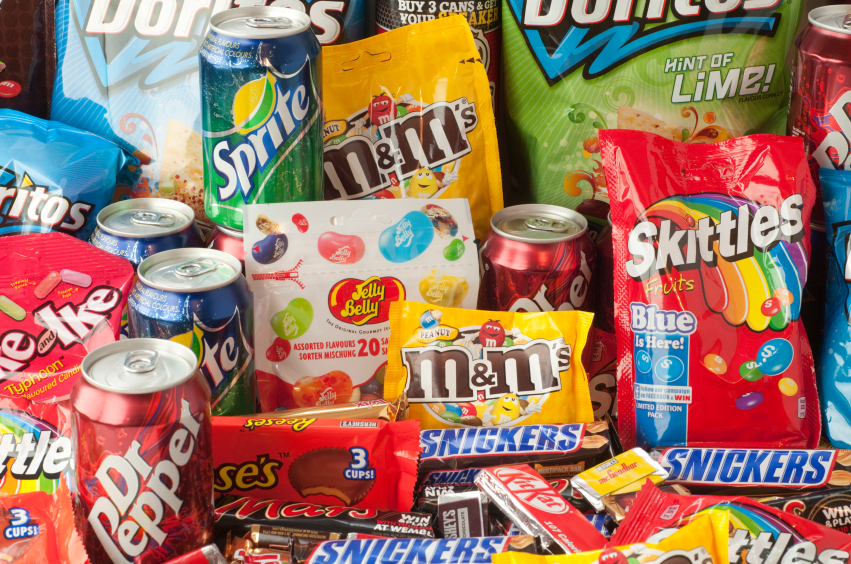
If you are worried about your dental hygiene, there is a good chance that you already devote a little time in your day to things like brushing, flossing and using mouthwash. While those three things are the cornerstone of great dental health, what you eat on a typical day can also have a big effect on the color, health and cleanliness of your teeth. Here are some of the worst foods for your teeth.
Dried Fruits
If you think that reaching for dried fruits like apricots or apples is a healthy choice, you’re not alone. While these snacks can be rich in vitamins and nutrients, they also have a lot of natural sugars. Unlike fresh fruit, however, dried fruits are sticky and hang around in your mouth longer than you would like. This sticky, sugary combination feeds bacteria and can even lead to dental erosion over time.
Sugary Sodas
With its combination of acid and sugar, soda is a lethal combination for the health of your teeth. Plus, the prolonged way that most people consume sodas makes it even worse. If you have a sip of a soda every few minutes, you are essentially washing your mouth with a sugary syrup over and over again for an hour or longer. If you choose to drink a soda, drink it all at once to reduce the time that your teeth are exposed to the beverage.
Hard Candies
Just like sodas, hard candies are so bad for your teeth because the sugar hangs around for a while. If you suck on a hard candy for 15 minutes, your teeth are exposed to the sugar for quite a while. If you chew it up, the odds are good that small, sticky pieces of the candy will stay on your teeth for even longer. Chewable candies and chocolates, even if they have the same amount of sugar, will almost always be better for your teeth than these hard counterparts.
Alcohol
There are plenty of medical benefits to enjoying a small glass of wine on occasion, but frequent alcohol consumption can bring with it problems for your teeth and mouth. Alcohol can corrode the gums, and those who consume alcohol in large amounts are more likely to have throat or mouth cancer. Since alcohol also slows saliva production, it can lead to bacteria particles building up in your mouth at a faster than normal rate.
Acidic Fruits
When you think of acidic fruits, it is citrus like oranges, tangerines, grapefruits, lemons and limes that probably come to mind. Add tomatoes to that list, and you have some of the most naturally acidic and sugary foods on the planet. Although these fruits have health benefits, they can eat away at your enamel and put you at a greater risk for cavities and tooth decay.
Although some of the foods on this list have health benefits, all can have negative effects on your teeth. You don’t have to skip them entirely, but make sure to brush or drink water after consuming things like soda, acidic fruits, alcohol, dried fruits and hard candies.
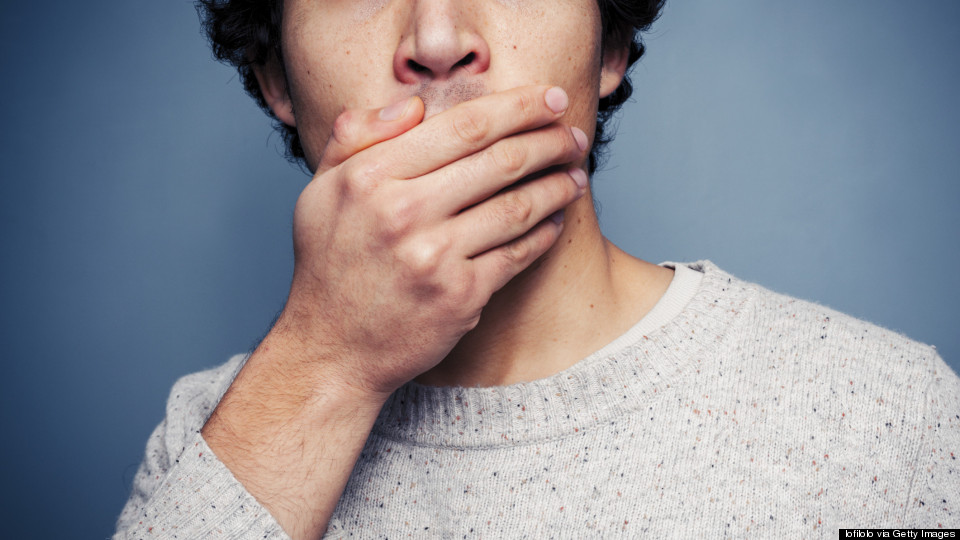
How can you tell if you have bad breath? In many cases, it’s obvious when a friend backs away during a conversation or your spouse avoids kissing you. However, if the people in your life are too nice to tell you that your breath stinks, all you need to do is floss and take a whiff of the debris you collected from between your teeth. If the smell makes you recoil, chances are you have a problem.
What’s Causing Your Bad Breath?
Also called halitosis, this condition can stem from the mouth or other parts of the body. The most common causes of foul breath include the following:
Improper Oral Care: The mouth is teeming with bacteria, and food debris and plaque that are not brushed and flossed away on a regular basis promote the growth of even more bacteria. The result is the foul stench of rotting food and bacterial overgrowth.
Diet: Garlic and onions are known to cause bad breath, but they don’t just coat the inside of the mouth with their strong odors. When they are digested and make their way into the bloodstream, their smells are emitted from the lungs when you breathe.
Tobacco Use: Cigarettes, cigars and smokeless tobacco contain numerous toxins that not only increase your risk of developing gum disease and cancer but also dry out the mouth and promote bacterial growth.
Oral Health Problems: Bad breath can be a warning sign of several oral health problems, including oral thrush, gum disease and tooth decay. Halitosis also occurs with xerostomia, a condition in which a sufficient amount of saliva is not produced to cleanse the mouth of dead cells.
Medical Problems: A host of medical issues can lead to bad breath, including respiratory infections, acid reflux disease, sinus issues, diabetes and diseases of the liver and kidneys. Some medications used to treat these and other conditions, especially chemotherapy drugs for cancer, can also lead to xerostomia and bad breath.
What Steps Can You Take to Eliminate Bad Breath?
Depending on the cause of your halitosis, methods of freshening your breath can range from merely improving your flossing technique to seeking treatment from your dentist:
1. Brush and Floss Regularly: To keep food particles and oral bacteria at bay, brush at least every morning and night , and floss at least once daily. You may want to throw an antiseptic mouthwash into the mix as well.
2. Keep Your Dental Appointments: Receiving checkups and cleanings can help prevent oral health issues that cause bad breath as well as detect periodontal disease and cavities so that they can be treated promptly.
3. Evaluate Your Diet: Garlic and onions are not the only foods that cause bad breath. Keep a log of what you eat and how it affects your breath to determine what offending foods you may want to avoid in mixed company.
4. Give up Smoking: Add bad breath to the long list of reasons why using tobacco products is a bad idea.
5. Keep Your Mouth Moist: If your halitosis stems from chronic dry mouth, drinking plenty of water and sucking on sugarless candies can help induce more saliva production.
What If Bad Breath Persists?
If self-care methods and dental treatment do not fix your problem, your dentist will recommend that you see your physician for a checkup. Your bad breath may be caused by an undiagnosed health problem or a medication that you are taking.
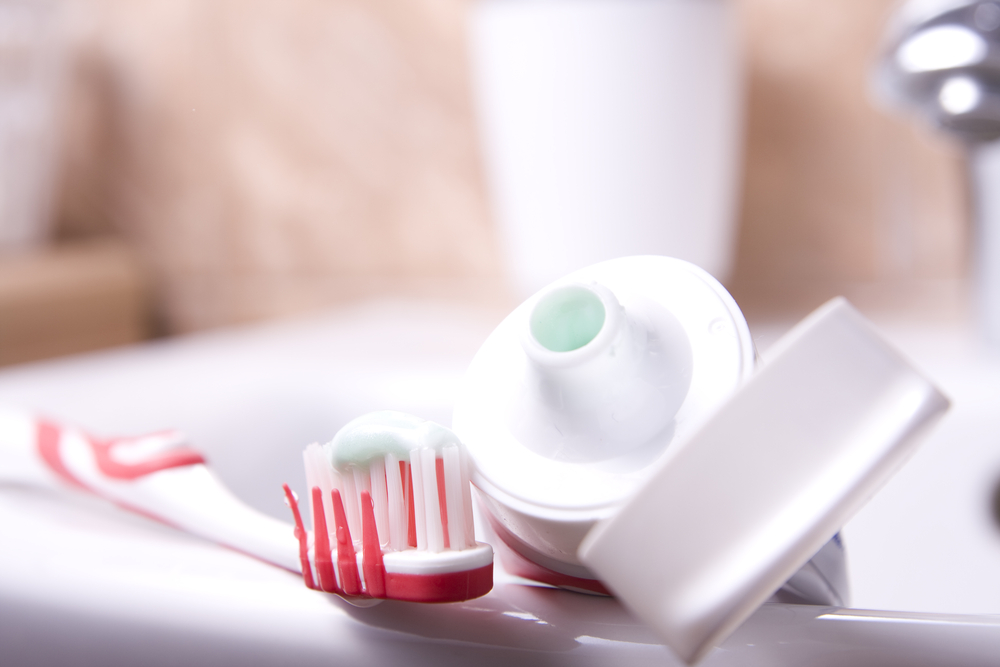
Gum disease is a chronic condition—once you’ve got it, you can manage the symptoms, but the damage to the structures that support your teeth cannot be reversed. That is why it is so important to be vigilant with preventive measures. Not only can this incurable condition lead to tooth loss, but it is also linked with several major health problems, including Alzheimer’s disease, high blood pressure, respiratory disease and diabetes. Fortunately, this condition, which is also called periodontal disease, is easy to prevent if you take proper oral care measures at home and see your dentist every six months for a checkup and thorough professional cleaning.
Best Practices for Oral Care at Home
The following five elements can help you take control of your periodontal health:
1. Flossing: You should floss at least once a day, gently sliding it against each tooth and under the gumline several times to ensure that the plaque is effectively removed.
2. Brushing: At least twice a day, brush all tooth surfaces, the gums and the tongue with a fluoride toothpaste.
3. Using Mouth Rinse: While brushing and flossing alone are usually enough to keep plaque under control, your dentist may recommend that you add an antiseptic or plaque-reducing mouth rinse to your cleaning routine.
4. Eating a Healthy Diet: A diet that is low in sugar and saturated fat and high in antioxidant-rich vegetables and fruits can support the immune system and keep gum tissues healthy.
5. Avoiding Tobacco Products: Over 60 percent of smokers develop gum disease. The harmful chemicals in cigarettes and smokeless tobacco products interfere with the functioning of gum tissue cells, decrease the flow of oxygen-rich blood to the gums and weaken the immune system.
Preventive Dental Visits
Seeing your dentist every six months is important for two reasons: prevention and early detection of oral health problems.
1. Teeth Cleaning: You love the look and feel of your teeth after the dental hygienist removes tartar and polishes the enamel, but there’s more at stake than aesthetics when you have your teeth cleaned. Removing plaque and tartar along the gumline helps prevent the inflammation and formation of pockets between the gums and teeth that are characteristic of gum disease.
2. Examination: Along with inspecting your teeth for decay and screening you for oral cancer, your dentist looks for signs of gum disease at each checkup. Because the earliest stage of gum disease can be reversed with proper treatment, you can’t afford to miss your routine dental appointments.
Signs of Periodontal Disease
The precursor to gum disease is gingivitis, which occurs when a buildup of plaque irritates the gums, causing inflammation and bleeding. If you notice tender, swollen or bleeding gums after you brush and floss, make an appointment with a dentist near you immediately. In most cases, gingivitis can be reversed by stepping up your oral hygiene routine at home and obtaining a deep cleaning of your teeth and gums at your dentist’s office. With proper treatment, gingivitis need not progress to full-blown gum disease.
